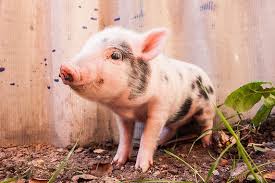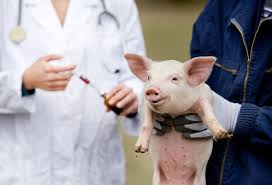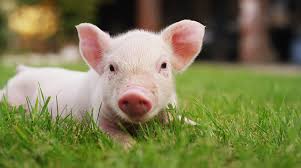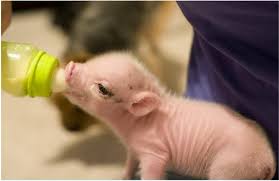Proper piglet care is essential for ensuring healthy growth and development in these adorable animals. This guide will provide you with the necessary information and practices to raise piglets successfully. From birth to weaning and beyond, every stage of a piglet’s life is critical for its overall well-being.
When piglets are born, they are incredibly vulnerable and require immediate attention. The first few hours after birth are crucial. Piglets rely on colostrum, the first milk produced by the sow, which is rich in antibodies and nutrients essential for their immune system. Ensuring that each piglet receives enough colostrum within the first 24 hours of life is vital, as it sets the foundation for a healthy life.
In addition to colostrum, maintaining a warm environment is essential for piglets. Newborns cannot regulate their body temperature effectively, making them susceptible to hypothermia. A heat lamp or a well-insulated farrowing pen can help maintain an optimal temperature. The ideal range for newborn piglets is between 90°F and 95°F (32°C to 35°C). Monitoring the temperature closely and making adjustments as necessary will help ensure the piglets thrive.
As piglets grow, they begin to explore their surroundings, and proper nutrition becomes increasingly important. At around three weeks of age, they can start eating solid food in addition to nursing. It is crucial to provide a high-quality starter feed that is specifically formulated for piglets, containing the right balance of protein, vitamins, and minerals. This will help promote healthy growth and development as they transition from milk to solid food.
Socialization is another critical aspect of piglet care. Pigs are social animals that thrive in groups. Keeping piglets together helps them develop social skills and reduces stress. However, it’s essential to monitor their interactions to prevent bullying or aggression. Providing plenty of space and enrichment, such as toys or obstacles, can help keep piglets engaged and happy.
Regular health checks are also vital for piglet care. Keep an eye out for signs of illness, such as coughing, lethargy, or a poor appetite. Vaccinations should be administered according to a veterinarian’s recommendations to protect them from common diseases. Regular deworming is also necessary to maintain their health and prevent parasite infestations.
In addition to health and nutrition, cleanliness plays a significant role in piglet care. Keeping the living area clean and dry can help prevent infections and maintain a healthy environment. Regularly change bedding and clean feeding areas to reduce the risk of disease.
Weaning typically occurs between 3 to 6 weeks of age. Gradual weaning can help reduce stress for both the piglets and the sow. After weaning, piglets should be provided with appropriate feed and continue to have access to clean water at all times.
Understanding Piglet Behavior

1. Social Interaction: Piglets are social animals and thrive in groups. They establish a social hierarchy, which can help reduce stress and aggression. Ensure adequate space for social interactions among piglets to promote healthy development.
2. Exploration and Play: Piglets are naturally curious and will explore their surroundings. Providing toys and safe objects to interact with can stimulate their play behavior and promote physical activity, which is essential for their growth.
3. Nesting Behavior: Pregnant sows exhibit nesting behavior, and this instinct carries over to piglets. Piglets may seek out warm, cozy areas to rest. Ensure that they have access to comfortable bedding to fulfill this need.
4. Feeding Behavior: Piglets learn feeding behaviors from their mothers. Observe their interactions during feeding time to ensure that all piglets are getting enough nutrition. Establishing a routine can help them feel secure during meals.
5. Stress Responses: Piglets may show stress through vocalizations, aggression, or withdrawal. Factors such as overcrowding, sudden changes in their environment, or the presence of unfamiliar animals can cause stress. Monitor their behavior closely and make necessary adjustments to their living conditions.
Essential Nutrition for Piglets
1. Colostrum Intake: The first milk, or colostrum, is crucial for piglets. It contains antibodies that help build their immune system. Ensure piglets receive adequate colostrum within the first few hours after birth.
2. Starter Feed: Introduce high-quality starter feed at around three to four weeks of age. This feed should be easily digestible and rich in protein, vitamins, and minerals to support rapid growth.
3. Balanced Diet: Provide a balanced diet that includes carbohydrates, proteins, fats, vitamins, and minerals. Work with a nutritionist to formulate a diet that meets the specific needs of your piglets based on their age and weight.
4. Fresh Water: Always provide access to clean, fresh water. Proper hydration is essential for digestion and overall health. Monitor water intake, especially during hot weather.
5. Gradual Transition: When changing diets, introduce new feeds gradually to avoid digestive upset. Monitor piglets closely during this transition to ensure they adapt well.
Creating a Comfortable Environment
1. Temperature Control: Maintain a suitable temperature for piglets, typically between 68°F to 75°F (20°C to 24°C). Use heat lamps or warming pads for young piglets to prevent chilling, especially in cooler weather.
2. Clean Bedding: Use clean, dry bedding materials to provide comfort and warmth. Straw or wood shavings are good options that also help absorb moisture and control odors.
3. Space Requirements: Ensure that piglets have enough space to move around comfortably. Overcrowding can lead to stress and aggression. Aim for at least 2 square feet per piglet in their living area.
4. Ventilation: Proper ventilation is essential for maintaining air quality in pig housing. Ensure good airflow to reduce humidity and ammonia levels, which can negatively impact respiratory health.
5. Safe Environment: Create a safe environment by removing sharp objects and hazards that could injure piglets. Regularly check the living area for any potential dangers and ensure that all equipment is in good condition.
Read Also: 18 Medicinal Health Benefits Of Hydnocarpus wightianus (Chaulmoogra)
Health Monitoring and Veterinary Care

1. Regular Health Checks: Conduct regular health assessments of piglets to identify signs of illness early. Monitor their behavior, weight, and appetite. Common symptoms of illness include coughing, diarrhea, and lethargy.
2. Veterinary Consultation: Establish a relationship with a veterinarian who specializes in swine health. Schedule routine check-ups and seek advice on disease prevention, treatment protocols, and any emerging health concerns.
3. Health Records: Maintain detailed health records for each piglet, including vaccination history, treatments administered, and any health issues encountered. This information is crucial for effective herd management and decision-making.
4. Monitoring Growth: Track the growth rates of piglets to ensure they are developing appropriately. Compare their weight against standard growth charts for their age. Slow growth can indicate nutritional deficiencies or health issues.
5. Emergency Protocols: Develop protocols for addressing emergencies, such as sudden illness or injury. Train farm staff on how to recognize symptoms and respond appropriately, including when to call a veterinarian.
Vaccination Schedule for Piglets
1. Importance of Vaccination: Vaccination is essential for preventing common diseases in piglets. A well-structured vaccination schedule helps protect them from serious health threats.
2. Recommended Vaccines:
i. At Birth: Administer colostrum within the first few hours of life.
ii. 2 to 3 Weeks: Vaccinate against diseases such as porcine parvovirus (PPV) and leptospirosis.
iii. 5 to 6 Weeks: Administer vaccines for swine influenza and PRRS.
iv. 8 to 10 Weeks: Give additional vaccines based on farm-specific health risks.
3. Consultation with a Veterinarian: Work with a veterinarian to customize the vaccination schedule according to your farm’s specific conditions, risks, and the health history of the herd.
4. Record Keeping: Keep detailed records of vaccinations for each piglet, including dates, types of vaccines administered, and any observed reactions. This information is vital for ongoing health management.
5. Follow-up Vaccinations: Ensure that follow-up vaccinations are administered as needed. Consistency in vaccination schedules is crucial for maintaining herd immunity.
Read Also: How To Prevent Rats From Invading Your Poultry House
Socialization and Playtime

1. Importance of Socialization: Socialization is essential for the behavioral development of piglets. It helps them learn to interact with each other, reducing stress and aggression as they grow.
2. Playtime Activities: Provide opportunities for play through toys, tunnels, and safe objects. Playtime promotes physical activity, mental stimulation, and healthy social behaviors among piglets.
3. Group Housing: House piglets in small groups to facilitate social interactions. Observing their behaviors in a group setting can help identify any issues early on, such as bullying or dominance struggles.
4. Supervised Interaction: Monitor playtime to ensure that piglets engage positively with one another. Supervision helps prevent any aggressive behavior that may arise during play.
5. Benefits of Socialization: Regular socialization leads to healthier, well-adjusted piglets that adapt better to changes and challenges later in life. It also fosters better growth rates and reduces stress during handling.
Weaning Process and Techniques
1. Timing of Weaning: Weaning typically occurs at around 3 to 4 weeks of age, depending on the health and growth of the piglets. Weaning too early can lead to stress and health issues.
2. Gradual Weaning: Introduce a gradual weaning process to minimize stress. This can include separating piglets from their mothers for short periods initially and gradually increasing the duration over several days.
3. Nutrition Transition: During weaning, provide high-quality starter feed to ensure piglets receive adequate nutrition. Starter feeds should be easily digestible and rich in essential nutrients.
4. Environmental Adjustment: Make necessary adjustments to the housing environment to accommodate weaned piglets. Ensure they have enough space, proper bedding, and a comfortable temperature.
5. Monitoring Post-Weaning: After weaning, closely monitor the piglets for any signs of stress or health issues. Keep track of their weight and feeding behaviors, and consult a veterinarian if any concerns arise.
Do you have any questions, suggestions, or contributions? If so, please feel free to use the comment box below to share your thoughts. We also encourage you to kindly share this information with others who might benefit from it. Since we can’t reach everyone at once, we truly appreciate your help in spreading the word. Thank you so much for your support and for sharing!
Read Also: Sheep 101: Wool Production Complete Guide

